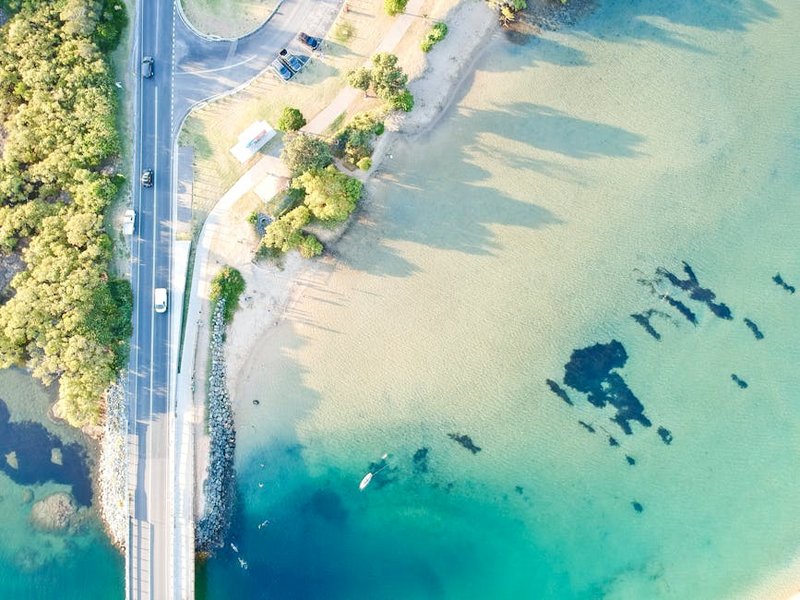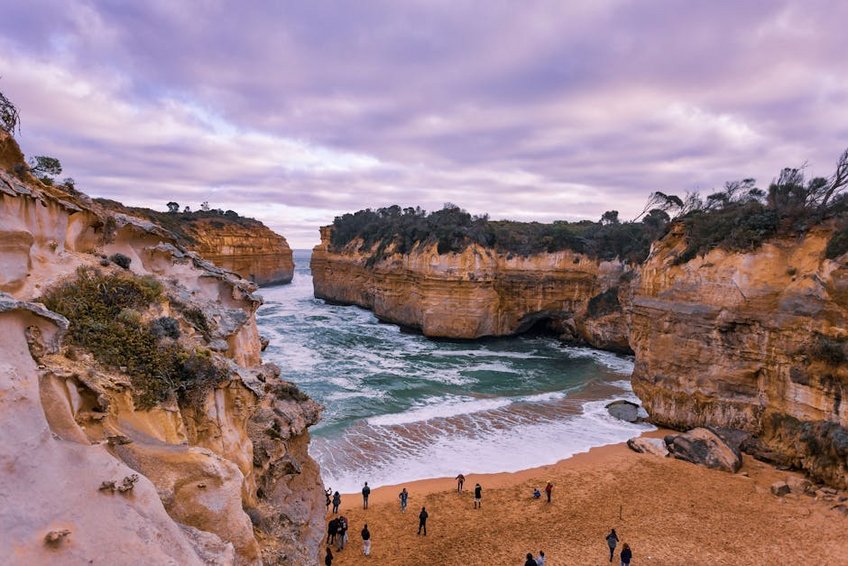Melbourne Great Ocean Road: Australia’s Most Scenic Coastal Drive
Driving the Melbourne Great Ocean Road stands as one of Australia’s most iconic travel experiences, offering breathtaking coastal views, charming seaside towns, and world-class natural attractions. This 243-kilometer (151-mile) stretch of road winds along Victoria’s stunning southern coastline, revealing dramatic limestone cliffs, lush rainforests, and pristine beaches that will leave you constantly reaching for your camera. Whether you’re planning a day trip from Melbourne or a more leisurely multi-day adventure, the Great Ocean Road delivers an unforgettable journey through some of Australia’s most spectacular landscapes. The route’s engineering marvel itself tells a story of determination, built by returned soldiers between 1919 and 1932 as a memorial to their fallen comrades. As you navigate the winding coastal road, you’ll discover why this destination consistently ranks among the world’s greatest road trips, combining natural wonders, wildlife encounters, and cultural experiences that cater to every type of traveler.
Melbourne Great Ocean Road Essential Information
Before embarking on your Melbourne Great Ocean Road adventure, understanding the basics will significantly enhance your experience. The road officially begins in Torquay, about 100 kilometers (62 miles) southwest of Melbourne’s city center, and extends to Allansford near Warrnambool. Most travelers complete the drive over 2-3 days, though day trips are possible if you’re short on time. The route is well-signposted with distinctive road markers featuring the Great Ocean Road logo, making navigation straightforward even for international drivers. You’ll want to budget approximately $150-300 USD per day per person for accommodation, meals, and activities, though costs can vary significantly depending on your travel style. The road is generally well-maintained and suitable for standard vehicles, though some secondary roads to lookout points might require extra caution during wet weather.
What You Need to Know Before You Go
- Drive on the left side of the road in Australia, and international visitors will need either an International Driving Permit or a valid driver’s license from their home country with an English translation if necessary
- The best mobile coverage exists in larger towns, but some remote sections may have limited signal, so download offline maps and important information beforehand
- Weather can change rapidly along the coast, so pack layers including waterproof clothing even during summer months
- Book accommodations well in advance during peak seasons (December-January and Easter), as popular towns like Lorne and Apollo Bay fill up quickly
- Budget travelers can manage on $75-100 USD per day by staying in hostel dormitories, preparing some meals, and focusing on free natural attractions
- Mid-range travelers should budget $150-250 USD daily for comfortable motel accommodations, dining at casual restaurants, and paid activities like helicopter flights or guided tours
- Luxury experiences range from $300-500+ USD per day featuring boutique accommodations, fine dining, and exclusive experiences like private guided tours or spa treatments
- Official Victoria Tourism Great Ocean Road Information
- Tourism Australia Great Ocean Road Guide
Key Details for International Travelers
For visitors arriving from overseas, several practical considerations will ensure a smooth Melbourne Great Ocean Road experience. Most nationalities including US, UK, and EU passport holders need an Electronic Travel Authority (ETA) or eVisitor visa for Australia, which can be obtained online before departure. The official currency is Australian dollars, though credit cards are widely accepted in most establishments along the route. English is the primary language spoken throughout the region. The time zone is Australian Eastern Standard Time (AEST), which is UTC+10, or UTC+11 during daylight saving time from October to April. Travel insurance is highly recommended as medical costs can be high for international visitors without coverage.

Melbourne Great Ocean Road Planning Your Trip
Strategic planning transforms your Melbourne Great Ocean Road journey from a simple drive into an unforgettable adventure. The most common approach involves starting from Melbourne and traveling westward, which keeps you on the ocean side of the road for optimal viewing and easier pull-over opportunities at lookout points. However, some travelers prefer the reverse direction to avoid tour bus crowds at major attractions. Consider your interests when planning stops—nature lovers might allocate more time for national parks, while food enthusiasts may want to schedule meals at specific farm-to-table restaurants or local producers. Always build in extra time for spontaneous stops, wildlife sightings, and simply soaking in the magnificent views that appear around nearly every bend in the road.
Best Time to Visit Melbourne Great Ocean Road
The Melbourne Great Ocean Road offers distinct experiences throughout the year, each season presenting unique advantages. Summer (December-February) brings warm weather with average temperatures of 25°C (77°F), perfect for beach activities but also the busiest period with higher accommodation prices. Autumn (March-May) offers milder temperatures, fewer crowds, and stunning foliage in the Otway rainforest areas. Winter (June-August) provides dramatic storm watching opportunities and the lowest tourist numbers, though some attractions may have reduced hours. Spring (September-November) showcases wildflowers blooming along the coast and increased whale watching opportunities. For ideal conditions with moderate crowds, aim for the shoulder seasons of March-May or September-November when you’ll enjoy pleasant weather without the peak season congestion.
Budget Planning and Costs
Essential Preparation Checklist
Proper preparation ensures you make the most of your Melbourne Great Ocean Road adventure. First, secure your vehicle rental well in advance, especially during peak seasons, and consider paying extra for insurance coverage given the winding nature of the road. Pack comfortable walking shoes for exploring beaches and rainforest trails, binoculars for wildlife spotting, and a quality camera with extra memory cards. Download the official Great Ocean Road app for offline maps and current information about attractions. Check road conditions and weather forecasts before departure as sections of the road can occasionally close due to weather events or maintenance. Finally, create a flexible itinerary that includes must-see attractions but allows for spontaneous discoveries along this spectacular coastline.
Melbourne Great Ocean Road Top Attractions and Activities
The Melbourne Great Ocean Road delivers an incredible diversity of experiences beyond the iconic coastal views. Of course, the Twelve Apostles stand as the route’s most famous landmark—these magnificent limestone stacks rising from the Southern Ocean create a breathtaking spectacle, particularly at sunrise or sunset. However, numerous other attractions deserve equal attention, including Loch Ard Gorge with its dramatic shipwreck history, the London Arch (formerly London Bridge) which partially collapsed in 1990, and the Gibson Steps leading down to beach level views of the apostles. Beyond these well-known stops, the region offers incredible rainforest walks in Great Otway National Park, wildlife encounters at Tower Hill Wildlife Reserve, and charming coastal towns each with their unique character and attractions.
Must-See Highlights
No Melbourne Great Ocean Road journey is complete without experiencing its signature attractions. The Twelve Apostles viewpoint offers arguably Australia’s most photographed coastal scene, with eight remaining limestone stacks (despite the name) rising up to 45 meters (148 feet) from the ocean. Early morning provides the best lighting for photography and fewer crowds. Loch Ard Gorge, named after a shipwreck that occurred in 1878, features stunning geology and fascinating history with several walking trails exploring different perspectives of the gorge. The Great Otway National Park provides a wonderful contrast to the coastal scenery with ancient rainforests, waterfalls, and the Otway Fly Treetop Walk allowing visitors to stroll through the canopy 25 meters (82 feet) above the forest floor.
Hidden Gems and Local Favorites
Beyond the famous landmarks, the Melbourne Great Ocean Road conceals numerous lesser-known treasures that reward curious travelers. The Bay of Islands Coastal Park offers similarly dramatic rock formations to the Twelve Apostles but with significantly fewer visitors. Blanket Bay in Great Otway National Park provides a secluded beach experience surrounded by pristine forest. For a unique perspective, consider the Cape Otway Lightstation, Australia’s oldest surviving lighthouse where you can climb to the top for panoramic ocean views. The fishing village of Port Fairy, located just beyond the official end of the road, charms visitors with its historic buildings, excellent restaurants, and nearby Griffith Island with its colony of shearwater birds. These off-the-beaten-path experiences often become the most memorable aspects of a Great Ocean Road journey.
Melbourne Great Ocean Road Practical Travel Information
Navigating the Melbourne Great Ocean Road requires some practical knowledge to ensure a smooth and enjoyable experience. The road is generally well-maintained but features numerous curves, hills, and single-lane sections that require attentive driving. Speed limits change frequently through towns and scenic areas, so stay alert for signage. Parking at popular attractions can be limited during peak times, so arriving early or later in the day helps avoid congestion. Fuel stations are available in major towns but can be expensive in remote areas, so fill up when you see reasonable prices. Cell service can be unreliable in more remote sections, so download offline maps and have a paper map as backup. Remember that Australian road rules require drivers to carry their license at all times and maintain a zero blood alcohol level for learner and provisional license holders.
| Accommodation Type | Features and Recommendations | Price Range (USD per night) |
|---|---|---|
| Budget Hostels | Dormitory-style lodging in larger towns, social atmosphere, shared facilities | $25-50 |
| Mid-Range Motels | Private rooms with en suite bathrooms, convenient parking, often family-run | $80-150 |
| Beachfront Hotels | Ocean views, restaurant facilities, prime locations in popular towns | $150-300 |
| Luxury Retreats | Boutique properties, premium amenities, exclusive locations, fine dining | $300-600+ |


